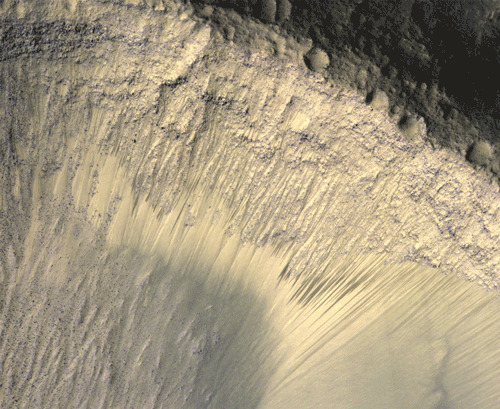Free Flowing Water On Mars Needs To Be Protected From Contamination
NASA has put a number of probes onto the surface of Mars and in orbit around the red planet over the years. Each time NASA launches a mission to Mars, or any other body in our solar system, it takes steps to prevent any contamination of the planet. The problem is that as we explore the planets in our solar system for signs of life, we have to be sure that the life we might discover didn't get there because we contaminated the planet with life from Earth.
The Curiosity rover has proven that millions of years ago there was water flowing on the surface of Mars in the form of rivers. More recently the Mars Reconnaissance Rover (MRO) found evidence that water still flows ion the surface of Mars. The water flows in the form of dark lines called recurrent slope linea.

Scientists believe that these streaks of water come from ice under the surface of the planet that melts during the Martian summer and flows down the hill. The MRO took photos of the same location over time during the summer and the photos clearly show the lines lengthen (as seen in the animated image above). Scientists believe this lengthening happens as more water ice melts and runs further down the hill.
The ice is believed to be trapped about a meter underground. This is exciting news, and causes some anxiety among scientists at the same time. The fear is that this native water on the surface of the planet might get contaminated with microbes from Earth. It's very difficult to sterilize large objects like rovers and even only a couple microbes transferred to the surface of Mars from Earth could foul future missions searching for life. Once contaminated we would have a hard time determining if any life discovered on the red planet grew there or was transferred there by our own mistakes.
The scientists say that the theory of melting ice under the surface is given credence because the area where the dark streaks grow during the summer is where temperatures can reach around 68F. Typically, the surface of Mars is very cold. However, near the equator during the summer at noon the temperatures can be high enough to melt the ice. Scientists are working with NASA to set aside some "special areas", those where surface water is likely to be encountered. In these areas any rovers or landers would have to be sterilized before launch.
SOURCE: ExtremeTech
